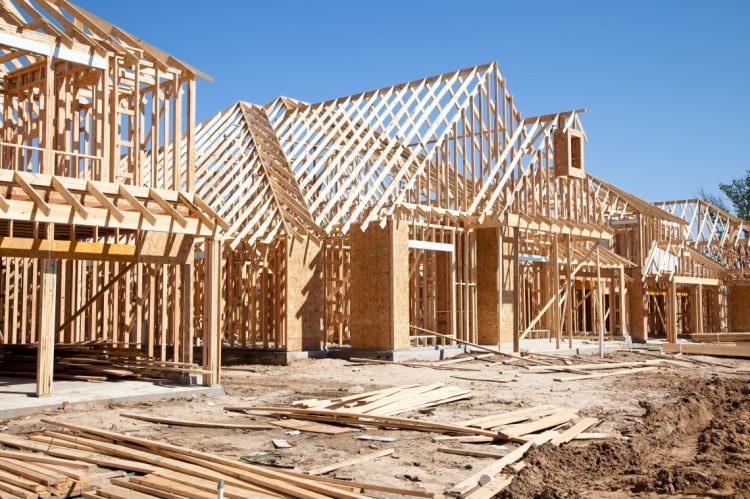January saw a notable drop in housing starts across the country—dropping 14.8% from December—to a seasonally adjusted rate of 1.33 million units, a 0.7% decrease below the rate in January 2023, as indicated by a new data report from the National Association of Home Builders (NAHB).
The 1.33 million starts figure represents the amount of housing units builders would begin if development remains stagnant for the next 12 months. Within this number, single-family starts dropped 4.7% to a 1 million seasonally adjusted rate—which is still up 22% from a year ago—and multifamily starts decreased to 35.6%, at an annual expected pace of 327,000.
The major decline in multifamily housing starts led to overall housing starts remaining low in January, despite single-family production revealing the potential for growth later in the year, as interest rates begin to maintain. A portion of the U.S. experienced significantly more snow than other areas—leading to less construction—which played a factor in the seasonally adjusted data, too.
Additionally, rising apartment vacancy is not due to fewer renters, but rather, the oversupply of construction in the past three years, which, as indicated by data, may lead to continuing housing shortages in the coming months.
From a regional perspective, compared to December, single-family and multifamily starts are:
- 20.6% lower in the Northeast
- 30% lower in the Midwest
- 15.7% lower in the West
- 9.7% lower in the South
Permits:
- Decreased 1.5% to a 1.47 million unit annualized rate in January
- Multifamily permits decreased 7.9% (to an annualized 455,000 pace, the lowest since April 2020)
- Single-family units increased 1.6% (1.02 million unit rate, highest since May 2022)
What the experts say:
“New housing starts were down 14.8% between December and January, which reflects last month’s wintery weather rather than a pullback in builders’ confidence. In fact, homebuilder confidence hit a five-month high this month, and builders expect a brisk spring buying season, according to the National Association of Home Builders’ most recent survey.
The biggest declines in January were in the regions that were hit by the biggest winter storms. In the Northeast, new starts were down 20.6% month-to-month, while starts fell by 30% in the Midwest. Compared to a year ago, the number of new housing starts was basically flat (down 0.7%), but new single-family starts were 22% higher.
The expectation of lower mortgage rates has fueled new home construction activity and homebuilder confidence. In the early part of 2024, however, rates have been bumping around and have increased for the past three weeks. But rates will come down this year, and when they do, homebuilders should see a lot of buyer traffic.
Housing inventory has been low, as the number of new listings has hit more than two-decade lows in many markets across the country. New homes still account for about 30% of all homes available for sale, which is up from about 10% or 15% of available inventory in a more typical market. This spring, there will be more new listings coming onto the market, though buyers will still outnumber sellers, and there will still be robust demand for new homes,” said Bright MLS Chief Economist Dr. Lisa Sturtevant.
NAR Chief Economist Lawrence Yun gave insight in the following statement:
“Housing starts collapsed in January. More snow than usual fell across parts of the country, but the seasonally adjusted data implies a continuing housing shortage ahead. Multifamily construction fell 37% from a year ago and has been one of the lowest monthly activities over the past decade. Rising apartment vacancy is not due to fewer renters, but rather, the oversupply of construction in the past three years. Developers are, therefore, pulling back, at least temporarily. Single-family home construction also fell by 5% from the prior month, but remained above the key 1-million-unit mark. Ideally, single-family housing starts would be at 1.2 million, which would measurably help to relieve the housing shortage. America greatly underproduced housing in the decade before COVID. That shortage is still lingering in the marketplace. The way to address the shortage is to incentivize construction. However, some localities are choosing the wrong policies, such as rent control, NIMBYism and raising impact fees, which will make the shortage worse and raise housing costs in the long run.”
“Multifamily construction is forecasted to post a large decline in 2024 as the number of units currently under construction is near the highest level since 1973,” said NAHB Chief Economist Robert Dietz. “Meanwhile, single-family production, which is currently running at a 1-million-unit annual rate, is roughly in line with builder sentiment that remains right below a breakeven level, according to our latest surveys. We are forecasting single-family starts to post a modest gain in 2024 as mortgage rates moderate on expected interest rate cuts by the Federal Reserve later this year.”
For the full NAHB report, click here.












